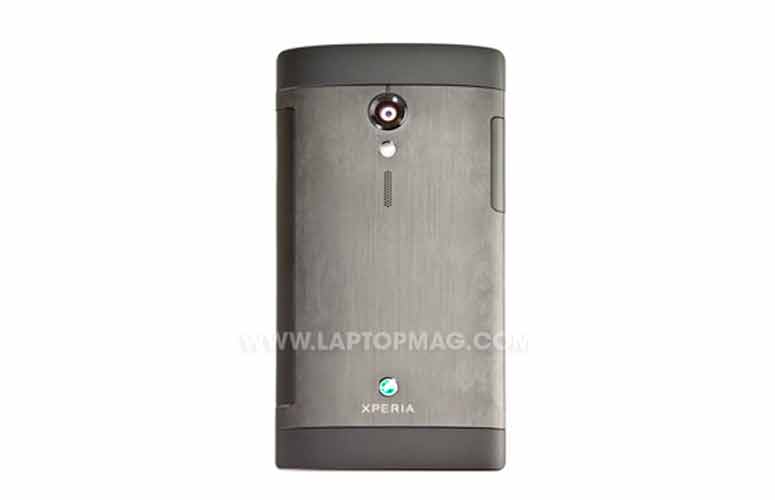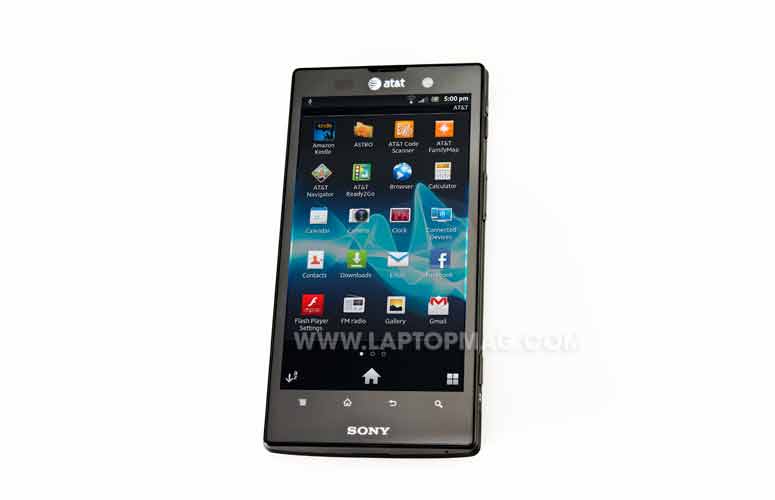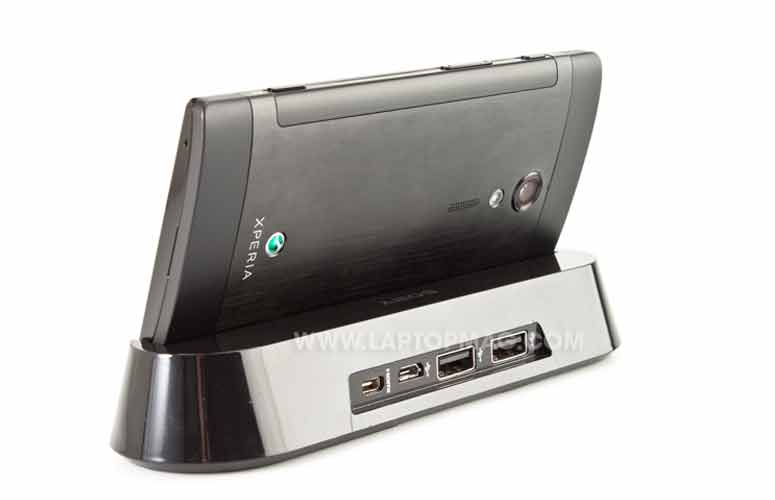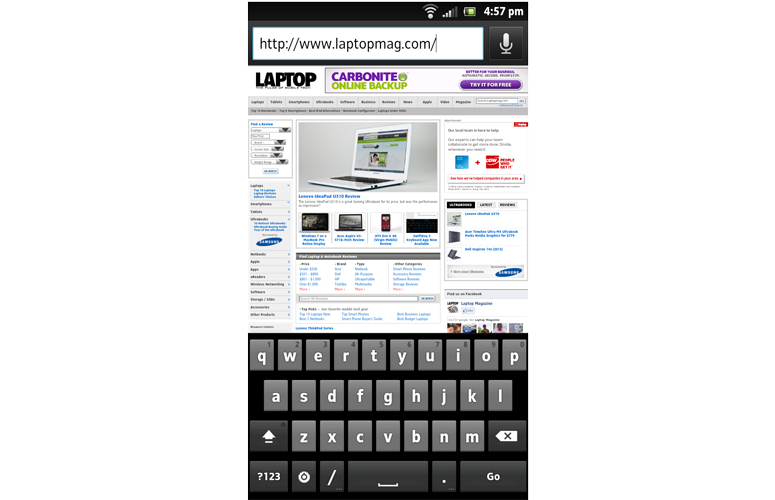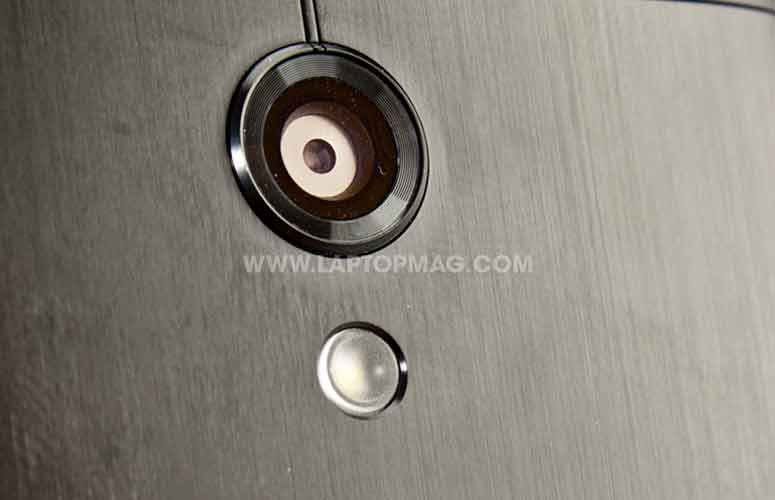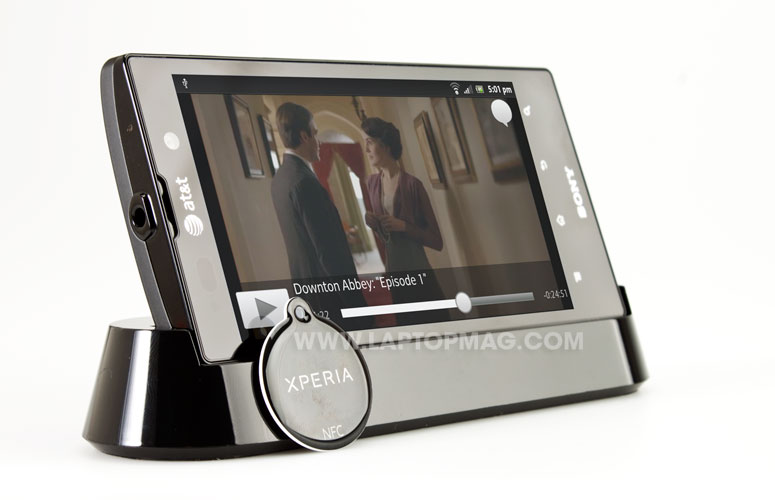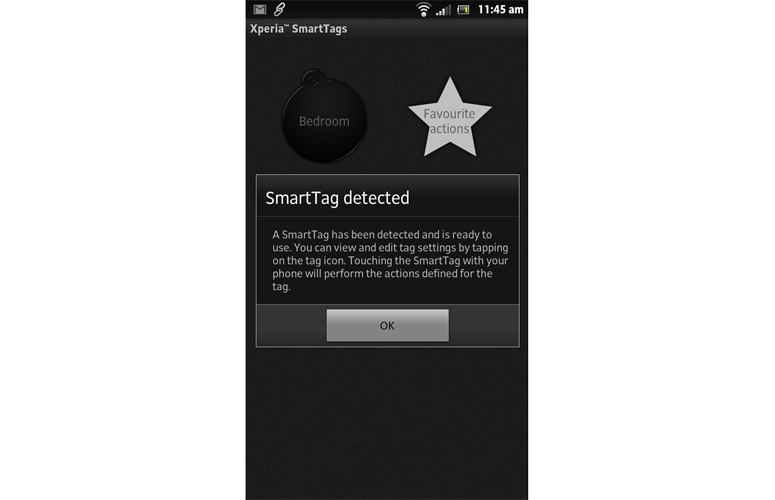Laptop Mag Verdict
The Sony Xperia ion combines a sharp 12-MP camera and fast 4G speeds for a good price, but the older OS and hard-to-read buttons are turn-offs.
Pros
- +
Bright and sharp 4.6-inch 720p display
- +
Superb 12-MP camera
- +
4G LTE at value price
- +
SmartTags feature lets you control the phone from a keychain
Cons
- -
Ships with older Android Gingerbread 2.3.7
- -
Heavier and thicker than competing smartphones
- -
Capacitive buttons hard to read
- -
Tinny audio from speaker
Why you can trust Laptop Mag
Sony has lagged behind in the U.S. smartphone market, but the company hopes to turn a corner with its first post-Ericsson smartphone, the Xperia ion. The device leverages many of Sony's unique assets, including its own sensor for the 12-megapixel camera and a mobile version of Sony's TV Bravia engine for the 4.6-inch HD display. Plus, the ion taps into Sony's wide array of media content and is PlayStation certified. Add in 4G LTE speeds and NFC capability and you have what looks like a $99 bargain. Is this Xperia a compelling enough package to turn the tide?
Design
Click to EnlargeThe Xperia ion's minimalist design--beveled sides, and squared-off top and bottom--makes it one of the classier smartphones we've seen. The black brushed aluminum back sports Sony's (slightly raised) circular logo towards the bottom and the "Xperia" branding written in simple font right beneath it. Though the handset looks pristine from afar, up close we saw fingerprints wherever we touched it.
Measuring 5.24 x 2.7 x 0.46 inches and weighing 5.3 ounces, the Xperia ion is stockier than both the Samsung Galaxy S III (5.4 x 2.8 x 0.3 inches, 4.7 ounces) and the HTC One X (5.3 x 2.75 x 0.36 inches and 4.5 ounces), both of which offer larger screens. When holding it in our hand, we could reach the corners of the display, but not without awkwardly stretching our thumb out.
The Xperia ion features four silver icons (the standard Back, Home, Menu and Search) along the bottom edge. Unfortunately, the icons rely mostly on the reflective quality of their silver coloring for visibility. Thin strips of light do appear under each virtual button, but the icons themselves are not backlit, making them hard to locate in the dark. In addition, these buttons weren't as responsive as we're used to; at times we had to touch the icons multiple times before registering a reaction.
A 3.5mm headphone jack sits smack-dab center on the phone's top edge, while the back houses an impressive 12-megapixel camera along with flash. The left edge of the smartphone houses the power button and volume rocker toward the top, with a dedicated camera button sitting toward the bottom. On the right edge, a flap covers microUSB and HDMI ports. We're not a fan of flaps.
Display
Sign up to receive The Snapshot, a free special dispatch from Laptop Mag, in your inbox.
Click to EnlargeThe Xperia ion flaunts a 4.6-inch HD Reality 720p (1280 x 720 pixels) screen backed by Sony's Mobile Bravia Engine. This proprietary image quality enhancer produced bright and vivid pictures. Capable of displaying 16 million colors, the Xperia Ion rendered text crisply, images boldly and games and video colorfully with plenty of satisfying detail.
We fired up an HD trailer of "The Amazing Spider-man" on YouTube and marveled at the tiny vibrant specks of light that made up Manhattan's skyline as Spider-man swung from building to building over speeding yellow cabs, streetlamps, and police sirens. The daytime scenes offered clear blue skies and lush greens as well, and the actors' skin tones were reasonably accurate. On the whole, colors tended to be on the warmer side.
Unfortunately, viewing angles are narrower on the ion than other Android phones we've tested. For example, two people flanking the phone couldn't comfortably see the images displayed on the device. By comparison, the Galaxy S III and One X consistently delivered wide viewing angles and excellent contrast.
The good news is that the Xperia ion notched a very good score on display brightness, 355 lux. Though this doesn't hold a candle to the current champion in this category, the HTC One X (525 lux), it's still well above the Samsung Galaxy S III (210 lux) and higher than the category average (304 lux).
Audio
Click to EnlargeWhen we launched Gotye's mid-tempo ballad, "Somebody That I Used To Know" on the ion we were disappointed by the results. The bright tones from the electric guitar / piano arrangements sounded extremely muted and tinny. We attempted to crank Daft Punk's "Robot Rock," but the usually frenetic bass lines on the song remained stubbornly feeble on the Xperia ion. We couldn't even hear it clearly over the whir of an electric fan. We also didn't appreciate the awkward placement of the speaker on the back, right beneath the camera. If we supported our phone against something or placed it on our lap, sound was muffled.
Software and Interface
Click to EnlargeThe Xpeia ion runs Android 2.3.7 instead of the newer Android 4.0 Ice Cream Sandwich software. That means you won't be able to enjoy features such as the Recent Apps menu for multitasking. Sony told us that the Xperia ion would be upgradeable to Android 4.0 Ice Cream Sandwich, but did not say when.
At last the Xperia Gingerbread install is reasonably clean. The usual five home screens are still present and remain fully customizable with widgets and shortcuts. By default, a digital clock widget appears on the Xperia ion's home screen. To bring up the notification center to view system-wide alerts, we dragged our finger from the top to bottom of the smartphone's display.
Keyboard
Click to EnlargeWe typed reasonably fast on the ion's keyboard, appreciating the phone's gentle haptic feedback. Long-pressing the top row of keys gave us secondary access to numbers, which was useful, but we missed the presence of the shortcut ".com" key. Google voice typing is also onboard, letting us quickly dictate texts and draft emails. The system worked well, except for when we uttered homonyms (such as "blue" and "blew") as part of our message.
The Xperia ion also comes with a proprietary Xperia keyboard, which includes personalization options for text prediction, auto correction, switching vibration on or off, and a wealth of language packs ranging from French and German to Icelandic and Tagalog.
Performance
On of the reasons why the Xperia ion is $100 less than the Samsung Galaxy S III and HTC One X is that it features an older 1.5-GHz Qualcomm S3 processor, compared to the newer and more powerful S4 chip for the two newer handsets. In our real-world testing, most apps launched instantly and animations played smoothly, without any stuttering.
On the CPU portion of the Benchmark app, the Xperia Ion notched a score of 2,914, about 400 points higher than the Android average (2,554). However, the Samsung Galaxy S III and HTC One X notched scores of 4,785 and 4,885 points, respectively. It's also worth noting that an older LTE smartphone offered by AT&T, the Pantech Burst, scored slightly better than the Xperia Ion (3,104 points with a 1.2-GHz dual-core processor).
The Xperia Ion's graphics performance were much better, though. When we ran An3DBench, the device scored 7,422, outclassing the Galaxy S III (7,272) and the One X (7,318) by a little bit and the Android average by more (7,063).
The Xperia ion comes with 16 GB of internal memory, which is expandable up to an additional 32 GB via microSD.
4G and Data Performance
The Sony Xperia ion leverages AT&T's 4G LTE network in 39 markets (with more to come). During our testing in New York City, download throughput averaged 8.8 Mbps using Speedtest.net, and topping out at 9.71 Mbps. Upload speeds were even better, averaging 12.4 Mbps. By comparison, the Galaxy S III averaged 13.3 Mbps downloads, with bursts of speed in the 23 to 27.5 Mbps range, but its upload rates were an average of 9.9 Mbps.
While surfing the web on the Xperia ion, mobile sites such as CNN and ESPN loaded in 3 to 5 seconds, while the desktop version of NYTimes rendered completely within 9 seconds.
The Xperia Ion can serve as a hotspot for up to five Wi-Fi devices, though you'll need AT&T's DataPro 5GB plan to use this feature ($50/month).
Apps and Entertainment
Click to EnlargePackaged within the Xperia Ion is the usual bevy of Android staples, including Google Maps, Calendar and Gmail. A number of popular third-party apps are also onboard, such as Amazon Kindle and the OfficeSuite viewer edition for reading office docs (upgrading to the pro version for document creation and editing will run you $9.99).
Of course, it wouldn't be an AT&T phone without AT&T's proprietary apps. To that end, AT&T bundles its Code Scanner, FamilyMap, Navigator, and Ready2Go (for "easy" set-up).
While it won't come pre-installed, the ion supports the Sony Entertainment Network bundle. Subscribers will get to try out the premium service level of Music Unlimited free for 30 days, gaining access to Sony's catalog of more than 12 million songs. Afterward, the Basic service of Music Unlimited delivers access to the entire collection of tracks for $3.99 per month and access to Basic Channels for era, genre and mood. Stepping up to Premium for $9.99 per month adds access to Top 100s from each genre, unlimited search and playback, and the ability to create playlists.
Sony's Video Unlimited service will let you rent or buy a slew of movies and TV shows from major studios. The phone is also PlayStation-certified, which means you'll be able to download classic PlayStation games onto the device.
Camera and Camcorder
Click to EnlargeThough the Xperia Ion was announced at CES six months ago, its 12-megapixel rear-facing shooter is still top notch. It captured vividly bright and sharp photos with impressive detail. We snapped a photo of some fruits laid out on a local stand, and the range of colors -- from the bold reds of the strawberries to the deep navy shades of some blueberries -- were accurate. Indoor shooting produced quality results; the flash worked well as long as we were close to our subject.
The ion's camera button enables you to open the camera and start shooting in just 1.5 seconds. Just don't expect the super-fast shutter speed offered by higher-end phones like the Galaxy S III and HTC One X. We noticed a hint of lag when shooting with the ion, but it also captures at a higher resolution that the competition.
We appreciated Sony's 3D sweep panorama feature. We simply panned the camera, and the ion stitched together a panoramic 3D image that we could view when the phone was connected to our Samsung 3D HDTV. Even better, we could use the TV's remote to pan around the photo. However, when we shot a panoramic view of a street corner, we found that moving pedestrians and cars blurred and streaked across the scene, making us dizzy.
We shot a 1080p HD video using the ion's camera on a busy New York street, which resulted in the same first-rate quality. Cabs were a vibrant yellow as they streaked down Fifth Avenue without any noticeable haze in the footage. However, some of the brighter spots in the video appeared a bit washed out.
Click to Enlarge
We tested the Xperia ion's front-facing 720p camera by conducting a Skype call with a co-worker over 4G. She said our image was "pretty sharp" and we thought her picture offered good detail, too. The video was smooth, and the phone never dropped the connection. Audio was accurate on both ends, though it was softer than we'd like.
TV Launcher and Interface
Click to EnlargeAn optional SmartDock for the Xperia ion lets you mirror the phone's display on an HDTV. The dock itself is a glossy black plastic, with a microHDMI, miniUSB, and two full-size USB ports in the back.
When connected, the ion's standard Android interface changes to the TV Launcher, a customizable carousel of application shortcuts. After mounting our Xperia ion unit on the dock and plugging in the power cable to the microUSB port, we viewed HD content from our phone on our TV's screen. Better yet, you can use your TV's remote, regardless of the brand (we used a Samsung HDTV) to navigate the interface.
However, we found that the protective flap over the ion's HDMI and microUSB ports got in the way of mounting our phone securely on the dock, which quickly got annoying. Sony said that we had a preproduction unit.
Initially, the TV Launcher displays nine icons against a predominantly black screen: Home, Voice Search, Browser, YouTube, Gallery, Facebook, Gmail and Add. In the upper left corner of the interface is rewind, play and fast forward functions for quickly manipulating your phone's media. In the upper right corner, a digital clock showed us the current time. We fired up YouTube, which showed us the familiar list interface of popular videos, and selected a clip to play using our TV's regular remote control buttons.
Click to EnlargeWe could also switch right into the Android interface, where we accessed apps such as Netflix. The video service streamed "Downton Abbey" to our big screen with good detail and clear audio coming through the TV's speakers -- a definite perk for users who haven't gotten around to purchasing a Roku or Apple TV yet.
It's worth noting, however, that we couldn't use our TV remote to make our media selection within Netflix, unlike with the YouTube app. We could only use the directional keys to scroll, and had to touch the Xperia ion's display to launch a show, which sort of defeats the purpose of the dock.
Sony has yet to announce pricing or availability of the dock.
NFC and SmartTag Technology
Click to EnlargeSony found some clever uses for the phone's integrated NFC chip. When tapped against Sony's SmartTags, small, quarter-sized tokens embedded with a programmable NFC chip, users can have the ion automatically perform up to 16 different actions. (The concept is similar to the TecTiles smart stickers offered for the Galaxy S III.)
For example, you can program a SmartTag and place it in your car so that the ion will activate Bluetooth, GPS and launch Google Navigation as soon as you get inside your car, or have a token by your bedside table that will command the phone to automatically shut off Wi-Fi and GPS and go into silent mode while turning on your morning alarm.
After making sure NFC was activated, we opened the Xperia SmartTags app within the ion's preloaded LiveWare manager in our apps drawer. We tapped on the virtual SmartTag to view and edit tag settings; then we programmed a range of actions for the tag, from automatically launching apps and URLs to setting sound modes and wallpapers. After we configured the SmartTag, we touched our phone to the token to perform the defined actions.
Overall, this feature worked very well. However, we had to ensure that we were touched the top part of the phone (near the rear-facing camera) to the tag to trigger actions, presumably because that's where the NFC chip is located.
A set of four SmartTags (in red, blue, black and white) is officially $30 from Sony, but they are can also be purchased through Best Buy for $24.99.
Call Quality and Battery Life
Call quality was predominantly clear in the Flatiron district of Manhattan and the Upper West Side. Our friend said we sounded good and didn't hear any static. We encountered no scratchiness on our end either, although we did notice that the earpiece didn't get very loud, even at the maximum setting. Similarly, sounds from the built-in speaker phone were similarly subdued. Though voices were never distorted, there wasn't a lot of volume.
Packing a 1,900-mAh battery, the Xperia ion has pretty good stamina considering it's an LTE smartphone. On the LAPTOP Battery Test, which involves continuous surfing over 4G, the device lasted a healthy 5 hours and 58 minutes. Though the runtime is bested by the Galaxy S III (6:28), it's just as good as the HTC One X (5:59), and slightly better than the category average (5:52). The Droid RAZR Maxx remains tops in this category with a lifespan of 8:25. Unfortunately, the ion's battery is sealed so there's no opportunity to replace it.
Verdict
Click to EnlargeSony took its sweet time from announcement to availability with the Xperia ion, but you get a lot of smartphone for your $99. The 12-MP camera, HD display, and and 4G LTE speeds all impress, even if the processing power trails higher end devices like the Galaxy S III. Sony also sweetens the deal with easy access to its entertainment services and clever accessories. Unfortunately, the design is relatively heavy and bulky and the Gingerbread OS feels dated. If you don't need the latest and greatest OS, the ion is a solid mid-range choice.
Sony Xperia Ion (AT&T) Specs
| Audio formats supported | eAAC+, WMV, WMA, WAV, MP4, MP3 |
| Bluetooth Type | Bluetooth 2.1 EDR with A2DP |
| Brand | Sony |
| CPU | 1.5GHz dual-core Snapdragon S3 CPU |
| Camera Resolution | 12MP |
| Carrier | AT&T |
| Company Website | http://store.sony.com/p/Sony-Xperia-Ion-Smart-Phone/en/p/LT28AT |
| Data | HSPDA, LTE |
| Display (main) | 4.6 inches (1280x720 pixels) |
| Form Factor | Candybar Touchscreen |
| Front Camera Resolution | 1.3MP |
| GPS | Yes |
| Internal Memory | 16GB |
| Memory Expansion Type | microSD Card |
| Networks | HSDPA 850/1900/2100 |
| Operating System | Android 2.3.7 |
| Ports | microUSB, HDMI, 3.5mm headphone |
| RAM | 1GB |
| Size | 5.24 x 2.7 x 0.46 inches |
| Talk / Standby Time | Talk time: Up to 10 h (2G) / Up to 4 hours (3G) Standby: Up to 400 hours (2G) / Up to 350 hours (3G) |
| Weight | 5.3 ounces |
| Wi-Fi | 802.11b/g/n |
